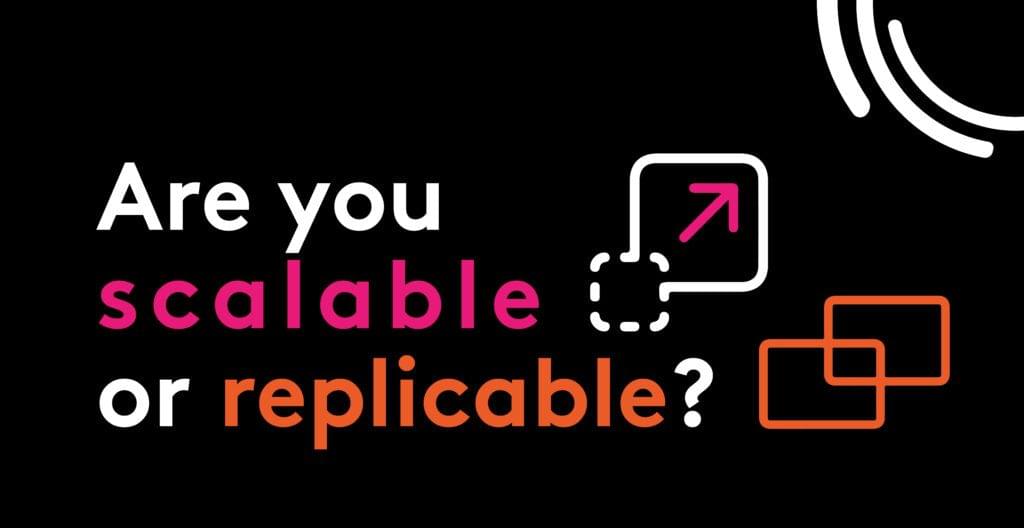
Are You Scalable Or Replicable?
Social enterprises & nonprofits are constantly looking to scale their impact to other parts of the country or across the continent. It’s the ultimate dream but often as you look for funding & donations, you might be told that your model is not scalable.
That might leave you confused because you’re so sure it is. But maybe, what they mean is you’re just replicable.
Okay, what’s the difference? Let’s break that down for you.
Being Replicable
Scalability and replicability are both important, but the subtle differences between the two can shift strategies and impact trajectories.
Put simply: something replicable can be copy-pasted with variations as needed. Some things are replicable but not scalable.
For example, a project that skills women from underserved communities in farming & invests in their small businesses is a good intervention that could be replicated to create more impact but is not particularly scalable.
If it’s been targeting women from an urban slum in Kampala, it can be brought to a new slum in the north of the country but the cost structures and inputs are largely the same.
Being Scalable
Something scalable can create impact at a rate that increases faster than the rate at which your effort and costs increase.
Scale, however, looks different.
Organisations that scale often involve training others into leadership, movement building, and leveraging technology to amplify impact. They involve not just delivering a replica of a project but building teams, seeding communities, and restructuring processes in the new countries they go into.
If you were to scale a project that skills women in farming for example, it would mean changing the entire structure of the project to go beyond skilling women in farming to perhaps growing into an organisation that provides agricultural innovation in seeds & crop protection to government agencies.
Let’s weigh the pros and cons
| Replicability | Scalability |
| Cons: – Impacts fewer people – Growth is limited to one skill – Lacks sustainability | Cons: – Risk of individual impact being diluted at scale – Hard to track rewards – Involves high financial risks |
| Pros: – Growth by replication is more straightforward – Acquires more individual impact | Pros: – Impacts more people – Ensures long term sustainability |
Consider this as you scale
The impact often runs the risk of being diluted at scale because you move from impacting 60 women a year to 5000 a year. The individual impact is often ignored because the lens is focused on groups and larger organizations.
The rewards may be great, but they also may be hard to track. Scalable interventions are necessary for the type of fundamental, power-shifting, world-changing impact that is required to solve the social and environmental problems that we are facing.
Scaling requires some tolerance for ambiguity and risk and you may have to wait a while for the big, measurable results and impact you seek.
Consider this as you replicate
Growth by replication is more straightforward, and because it’s less people being impacted at a time, there’s evident individual impact.
However, even with replicating the project in more communities, you risk higher dependence on donors and slow growth in the new communities you replicate in. in the end, you risk looking like a fraud in these communities
Food for thought
As you weigh, it’s important to be honest with yourself about the potential to scale. If you don’t have the capacity to scale, you can always replicate and still create more impact even though it might not be ground-breaking.
To know if your organization is better suited to scale or to replicate requires reflection and analysis of your programming, constituents, and core impact.
Ask yourself: which method best serves our mission and intended impact?